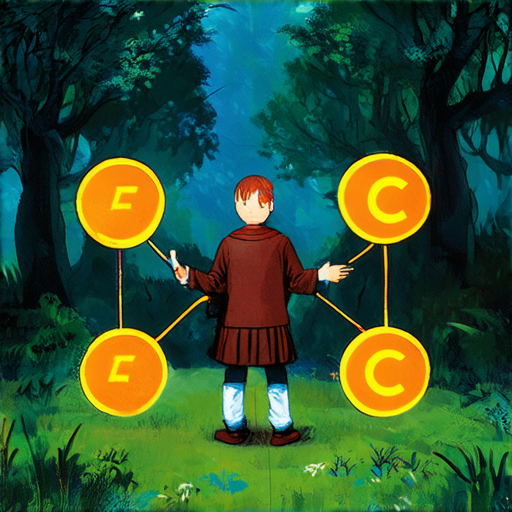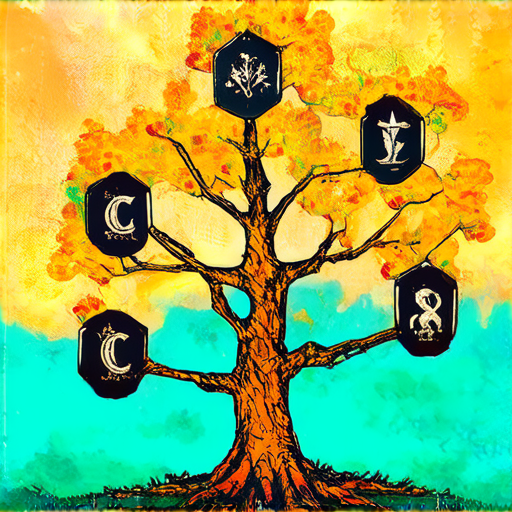Effective communication is often rooted in the art of expressive storytelling, where individuals weave intricate narratives that captivate their audience’s imagination and evoke emotions. This ancient form of human expression has been employed by artists, leaders, and everyday people alike to convey complex ideas, share personal experiences, and connect with others on a deeper level. By mastering the fundamental principles of storytelling, one can develop a powerful tool for self-expression, persuasion, and even education.

The 5 Cs of Storytelling
As a storyteller, I’ve always been fascinated by the power of narrative to captivate audiences and convey meaningful messages.
- Character: A well-developed character is essential to any compelling story. They should be relatable, flawed, and likable, making it easy for readers to invest in their journey.
- Context: Setting the scene and establishing the context of the story helps readers understand the world and its rules, allowing them to become fully immersed in the narrative.
- Conflict: Conflict drives the plot forward and creates tension, making the story more engaging and suspenseful. It can be internal, external, or a combination of both.
- Climax: The climax is the most intense and critical moment in the story, where the conflict reaches its peak and the protagonist faces their greatest challenge.
- Closure: A satisfying conclusion ties up loose ends and provides closure for the characters and the audience, leaving a lasting impression long after the story has ended.
By incorporating these five elements, storytellers can craft engaging narratives that resonate with their audience and leave a lasting impact.
In my own creative journey, I strive to master the art of storytelling, experimenting with different techniques and styles to find what works best for me and my audience.
For inspiration, I draw from various sources, including the works of renowned authors, filmmakers, and artists who have pushed the boundaries of storytelling.
Some notable examples include the likes of J.K. Rowling, known for her immersive world-building and memorable characters in the Harry Potter series, and Christopher Nolan, celebrated for his complex plots and thought-provoking themes in films like Inception and Interstellar.
These masters of storytelling continue to inspire me, and I hope to one day join their ranks in crafting unforgettable tales that captivate and move audiences worldwide.
Example of Emotional Storytelling
Emotional storytelling is a powerful technique used in marketing to connect with audiences on a deeper level.
- The Spotify ad from Valentine’s Day 2016 is a great example of emotional storytelling in action.
- This ad cleverly uses implication to convey emotion and encourages the viewer to fill in the gaps.
- By doing so, it creates a sense of connection with the audience and resonates with them on an emotional level.
Key Elements of Emotional Storytelling
- Imagination: Emotional storytelling often relies on the viewer’s imagination to fill in the gaps and create their own narrative.
- Implication: Implication is a key element of emotional storytelling, as it allows the viewer to infer meaning and create their own connections.
- Emotional Connection: Emotional storytelling aims to create an emotional connection with the audience, which can lead to increased engagement and loyalty.
Benefits of Emotional Storytelling
- Increased Engagement: Emotional storytelling has been shown to increase engagement and participation among audiences.
- Better Retention: Emotional storytelling can lead to better retention rates, as viewers are more likely to remember stories that resonate with them emotionally.
- Increased Loyalty: Emotional storytelling can create a strong emotional bond between the audience and the brand, leading to increased loyalty and advocacy.
Best Practices for Emotional Storytelling
- Know Your Audience: Understanding your target audience is crucial for effective emotional storytelling.
- Create a Compelling Narrative: A well-crafted narrative is essential for emotional storytelling, as it sets the tone and direction for the story.
- Use Visuals Effectively: Visuals play a critical role in emotional storytelling, as they can evoke emotions and create a sense of atmosphere.
Conclusion
Emotional storytelling is a powerful tool for connecting with audiences on a deeper level. By understanding the key elements of emotional storytelling, businesses can create campaigns that resonate with their target audience and drive real results.

The Role of Expression in Storytelling
As a storyteller, I believe that expression plays a vital role in conveying emotions, ideas, and experiences to my audience.
- Tone and Inflection: My voice is a powerful tool for expressing myself, and I use tone and inflection to convey the mood and atmosphere of a story.
- Hand Gestures: Hand gestures can add physicality to a story, helping to illustrate actions and emphasize key points.
- Facial Expressions: A well-timed smile, raised eyebrow, or wink can add nuance and subtlety to a story, making it more relatable and engaging.
- Body Language: My posture, stance, and movement can all contribute to the overall narrative, adding depth and emotion to the story.
By incorporating these forms of expression into my storytelling, I aim to create a rich and immersive experience for my audience, drawing them into the world of the story and evoking a emotional connection.
Key Takeaways:
- Expression is a crucial element of storytelling, allowing me to convey emotions, ideas, and experiences to my audience.
- Tone, inflection, hand gestures, facial expressions, and body language are all important tools for expressing myself as a storyteller.
- By mastering these forms of expression, I can create a more engaging, relatable, and memorable story that resonates with my audience.
Conclusion:
In conclusion, expression is a vital component of storytelling, enabling me to connect with my audience on a deeper level and bring the story to life.

What is Verbal Storytelling Called?
Verbal storytelling has been an integral part of human culture for centuries, allowing us to share experiences, emotions, and ideas with others.
- Definition: Oral storytelling refers to the act of sharing stories, tales, and anecdotes verbally, often accompanied by gestures, facial expressions, and vocal inflections.
- Types: There are various forms of oral storytelling, including folktales, myths, legends, fairy tales, and personal anecdotes.
- Purpose: Oral storytelling serves several purposes, such as entertaining, educating, and passing down cultural heritage and values.
Key Characteristics of Oral Storytelling
- Immediacy: Oral storytelling creates a sense of immediacy, allowing the audience to connect with the story and its characters in real-time.
- Emotional Connection: The use of vocal inflections, body language, and facial expressions helps to establish an emotional connection between the storyteller and the audience.
- Cultural Significance: Oral storytelling plays a vital role in preserving cultural heritage and traditions, allowing communities to pass down their history and values.
Examples of Oral Storytelling
- Folktales: Traditional stories passed down through generations, often featuring magical creatures, heroes, and moral lessons.
- Personal Anecdotes: Stories shared by individuals about their personal experiences, struggles, and triumphs.
- Legends: Stories based on historical events or figures, often embellished with mythical or supernatural elements.
Importance of Oral Storytelling
- Cultural Preservation: Oral storytelling helps to preserve cultural heritage and traditions, allowing future generations to learn from the past.
- Community Building: Oral storytelling brings people together, fostering a sense of community and social bonding.
- Emotional Intelligence: Oral storytelling helps to develop emotional intelligence, empathy, and understanding among individuals.
Four Types of Storytelling
I’ve always been fascinated by the power of storytelling, and I believe there are four primary types that can captivate audiences and convey meaningful messages.
-
The Personal Narrative
- When crafting a personal narrative, consider the following:
- Be authentic and vulnerable, sharing your true feelings and emotions.
- Focus on the lessons learned and takeaways from your experiences.
- Use descriptive language to paint vivid pictures in the reader’s mind.
-
The Fable
- When crafting a fable, consider the following:
- Keep the story concise and focused on the central message.
- Use symbolism and metaphors to convey complex ideas and themes.
- Make sure the moral lesson is clear and relatable.
-
The Anecdote
- When crafting an anecdote, consider the following:
- Choose a story that is relevant and memorable.
- Focus on the key takeaway or lesson from the story.
- Use descriptive language to bring the story to life.
-
The Myth
- When crafting a myth, consider the following:
- Draw inspiration from real-world cultures and traditions.
- Use symbolism and metaphor to convey deeper meanings and themes.
- Make sure the story is engaging and easy to follow.
A personal narrative is a story that revolves around the storyteller’s own experiences, emotions, and reflections. It’s a powerful tool for building connections with others and sharing valuable lessons learned from life’s challenges.
A fable is a short, fictional story that conveys a moral lesson or message. These stories often feature non-human characters, such as animals, and are meant to teach a valuable truth or principle.
An anecdote is a brief, personal story that illustrates a point or supports an argument. These stories are often used in persuasive writing and public speaking to engage audiences and build credibility.
A myth is a story that has been passed down through generations, often featuring supernatural or magical elements. These stories can be used to explain natural phenomena, cultural traditions, or historical events.

What is Didactic Storytelling?
As someone who believes in the power of storytelling, I’ve always been fascinated by the concept of didactic storytelling.
- Didactic storytelling is a literary device that uses narrative techniques to convey moral lessons, teachings, or instructions to the audience.
- It involves using stories to educate, inform, or persuade the listener or reader about a particular idea, value, or principle.
Types of Didactic Storytelling:
- Fables: Short stories that feature non-human characters and are used to convey moral lessons.
- Parables: Stories that illustrate a moral lesson or teaching point, often featuring human characters.
- Instructional Manuals: Written guides that provide step-by-step instructions on how to perform a task or achieve a goal.
- Philosophical Treatises: Written works that explore complex ideas and concepts, often using narrative techniques to convey their meaning.
Examples of Didactic Storytelling:
- Aesop’s Fables: A collection of short stories that feature animals and are used to convey moral lessons.
- The Bible: A sacred text that contains numerous parables and stories that illustrate moral teachings.
- Self-Help Books: Written guides that provide advice and instruction on how to improve one’s life or achieve a particular goal.
- Instructional Videos: Online tutorials that demonstrate how to perform a task or achieve a goal.
Benefits of Didactic Storytelling:
- Engaging and memorable: Stories are often more engaging and memorable than dry lectures or instructions.
- Easily understood: Stories can convey complex ideas and concepts in a way that is easy to understand.
- Emotionally resonant: Stories have the power to evoke emotions and create a connection with the audience.
Best Practices for Didactic Storytelling:
- Keep it simple: Use clear and concise language to convey your message.
- Make it relatable: Use examples and anecdotes that resonate with your audience.
- Be authentic: Use your own experiences and perspectives to add credibility and authenticity to your story.
- Practice empathy: Put yourself in your audience’s shoes and try to see things from their perspective.

0 Comments